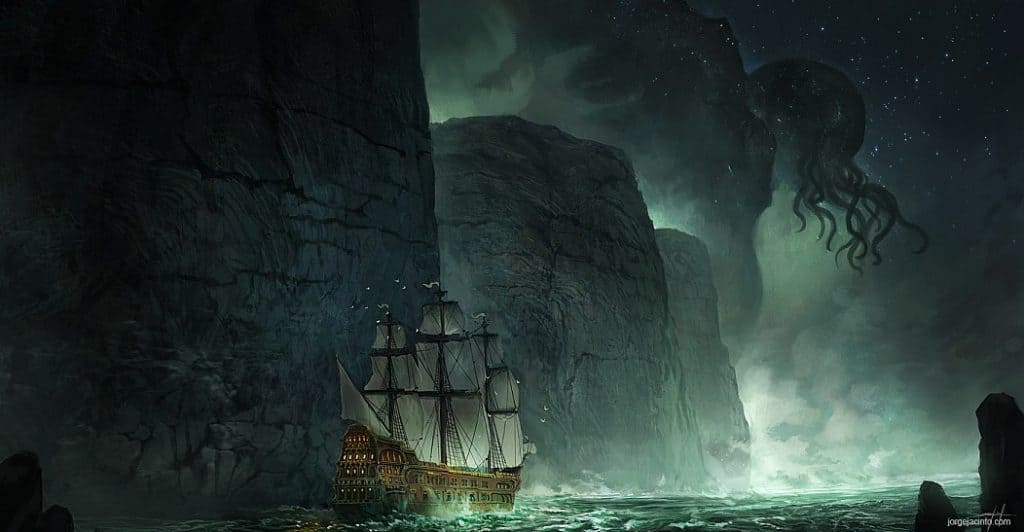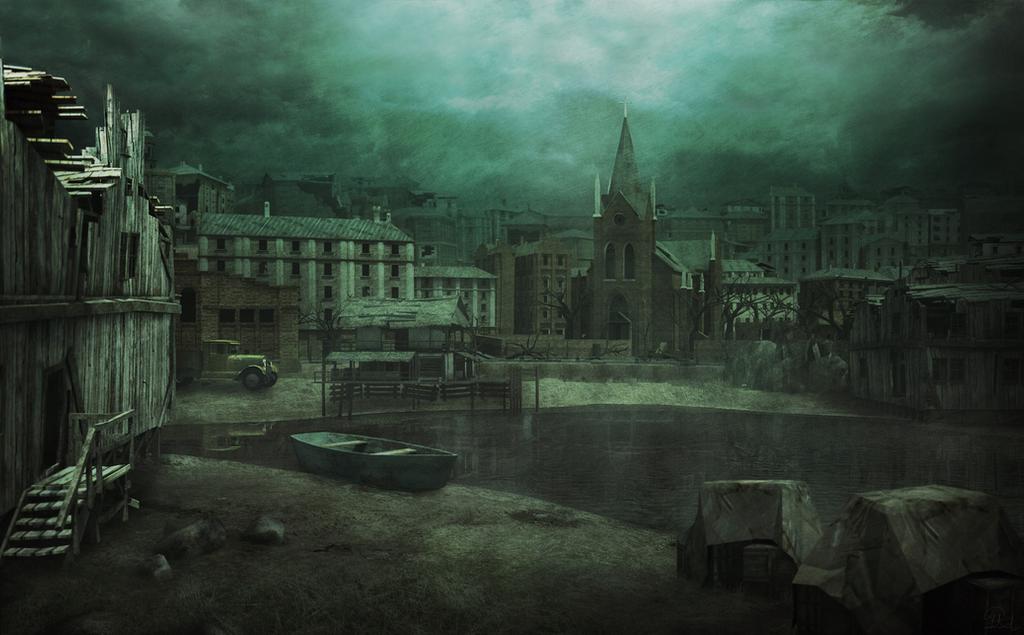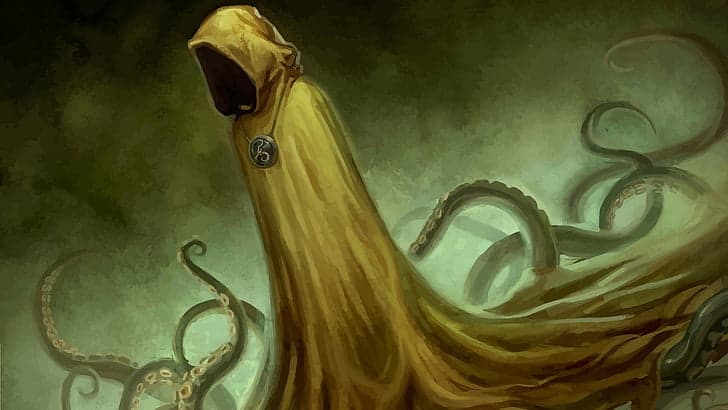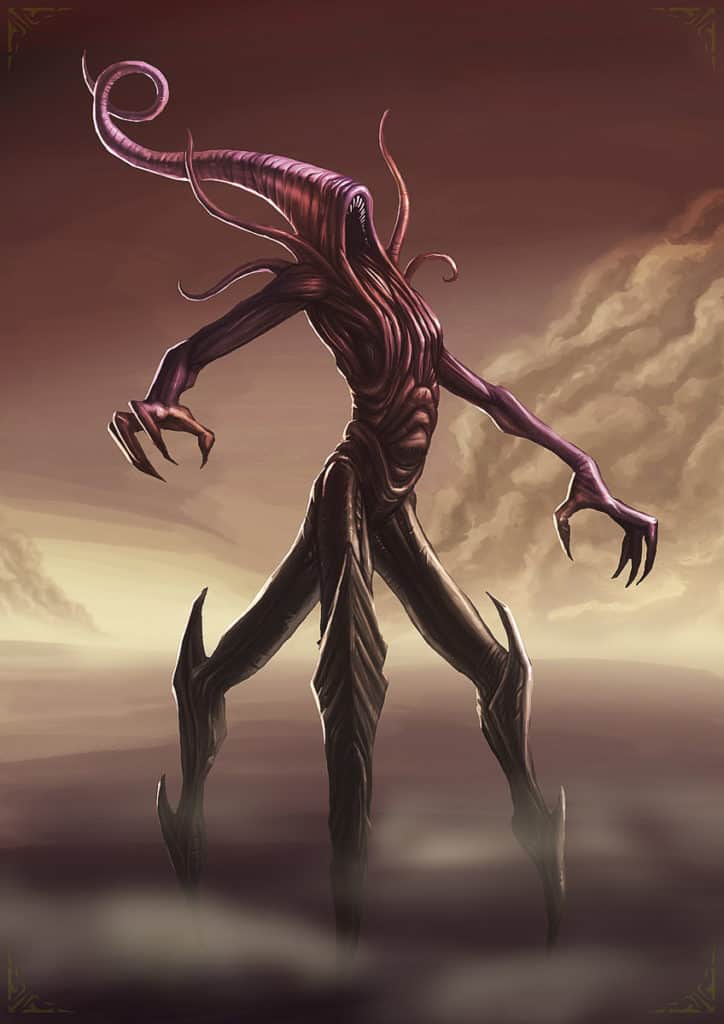I started in the role playing game hobby with Dungeons and Dragons and reading high fantasy novels. I started seeing references to Cthulhu and the Cthulhu Mythos. Not fully understanding the references, I did some research and here is what I learned.
The Cthulhu Mythos is fictional setting based upon the works of H.P. Lovecraft, but also Clark Ashton Smith, Robert W. Chambers, and others. Its themes include subjective reality, incomprehensible intelligences, the tension between knowledge and sanity, and existential nihilism. Its pantheon is The Elder Gods or Great Old Ones including Cthulhu.
The Cthulhu Mythos stories features cultists who are seeking to access the power of or awaken one or more of the Elder Gods. Their purpose often is purely nihilistic, the termination of our current reality. The protagonists, to stop the cultists, must learn about their purpose, methods and means to stop the ritual.
However, it is the acquisition of that knowledge, which caused the cultists to lose their sanity and spread their madness. Therefore the heroes of the story must risk losing their own sanity to use the cultists tools against them. Another complication is events happen or mythos creatures assault them, which only the protagonists can see or comprehend. This makes the heroes appear mentally unstable to local authorities.
This article references several books, short stories, and works of authors writing within the Cthulhu Mythos genre. If you’re interested in exploring these works in greater detail, please visit my Resource Page.
The Call of Cthulhu
Considered H.P. Lovecraft’s best work, The Call of Cthulhu, was published in 1928. Like most of Lovecraft’s work, they are mostly short stories. It tells the story of Francis Wayland Thurston’s discovery of the notes of his late, scholarly uncle. Included in the notes is a small sculpture of the titular Cthulhu. Thurston becomes the story’s narrator as he recounts his uncle’s notes.
The story continues his uncle’s investigation that created these notes and the sculpture. As is the case in many of Lovecraft’s stories, knowledge of the mythos’ reality comes through dreams or dream-like trances. These alternate realities are called by later scholars of the genre, The Dreamlands.
The story eventually reaches the discovery of cultists who writhe and chant, “Ph’nglui mglw’nafh Cthulhu R’lyeh wgah’nagl fhtagn,” which is translated as “in his house at R’lyeh, dead Cthulhu waits dreaming.” As investigation continues, Cthulhu is released from a portal in the sea. Through luck or coincidence, it is subdued but in the process many sailors are killed and the protagonists are driven insane.

As the emblematic Mythos tale, it has themes of madness, the danger of knowledge, bent reality, and obsession. To behold the creatures of the mythos is to force your brain to comprehend the incomprehensible (alien geometries). You must either look away or lose your sanity.
As emblematic of Lovecraft’s fiction, it represents his best and his worst. Lovecraft was an irredeemable racist and bigot. His works often reference how their are mongrel folk, corrupted humans, especially in the Dunwich Horror and The Shadow over Innsmouth. These are thinly veiled references to bi-racial children, Catholics, and Jews.

Lovecraft’s writing style is very particular, if not unique. His story structure and prose make his writing somewhat hard to follow. They can feel like the writings of a madman or lunatic, which also embodies the narrator or protagonists in his stories. This writing style evokes the bizarre, existential horror of the Mythos as much as the subject themselves.
The King in Yellow
A probable influence on Lovecraft’s writing, Robert W. Chambers published The King in Yellow in 1895. It is a collection of connected short stories about a play of the same name and its so-called Yellow Sign.
Those who read the play, plunge deeper and deeper into madness. The reading of each Act creates greater risk for the sanity of the reader, with Act I being mostly harmless. It is the story of the return of a missing king, The Yellow King, to the court of his daughters. But his return also heralds the death and destruction of play’s setting, the City of Carcosa.

Readers of the play, which is forbidden to be shown, start to see the Yellow Sign, a signifier of the coming of the Yellow King, in more and more places. But each sighting confirms the truth of the play, driving them deeper into madness. Their madness either tries to either hasten the King’s return or to stop the agents of the King.
In Lovecraft’s writings, he references the King in Yellow in several works. Ultimately, he connects the King to the Elder God Hastur via the Yellow Sign in The Whisperers in the Darkness. But like so many of Lovecraft’s references, they are light, not well explained, and as ephemeral as the visions of a madman.
The Elder Gods or Great Old Ones
Like with Hastur, the King in Yellow, and the Yellow Sign, the early “Lovecraftian” writers mentioned or listed the Elder Gods, but gave little explanation or connections. Again, within the fiction of the Mythos, to even know their names invites madness.
Lovecraft lists these beings of power in his short story, The Whisperers in the Darkness:
I found myself faced by names and terms that I had heard elsewhere in the most hideous of connections—Yuggoth, Great Cthulhu, Tsathoggua, Yog-Sothoth, R’lyeh, Nyarlathotep, Azathoth, Hastur, Yian, Leng, the Lake of Hali, Bethmoora, the Yellow Sign, L’mur-Kathulos, Bran, and the Magnum Innominandum—and was drawn back through nameless aeons and inconceivable dimensions to worlds of elder, outer entity at which the crazed author of the Necronomicon had only guessed in the vaguest way.
H.P. Lovecraft, “The Whisperers in the Darkness”

A penpal of Lovecraft, author and publisher August Derleth, writing in the Lovecraftian genre, classified and systematized these Elder Gods and coined the term the Cthulhu Mythos.
Ctbulhu is the most famous of the Great Old Ones. It is a being of immense size and power from ocean abyss. The destruction it brings is not personal. Your existence is no more consequential to it, then the millions of bacteria you kill every time you wash your hands. The only thing worse then a purposeful death is an indifferent one.
Tsathoggua is the creation of author Clark Ashton Smith. Where Chthulhu is a draconic octopus or squid, Tsathoggua is a behemoth, hairy frog god. It dwells or sleeps deep in the earth. Its servitors or agents is essentially intelligent black goo or oil, that can shape shift. Think of the Black Oil from the X-FIles. Tsathoggua does not have an agenda, but merely opposes the Elder Gods associated with air and sky.
Yog-Sothoth is another Lovecraftian Elder God. Its form is a bunch of glowing spheres and knows the past, present, and all futures. It knows everything about our universe because it is locked outside of it as an observer. However in The Dunwich Horror, it is Yog-Sothoth who impregnates a women who bears twins. Again, there is no fixed reality and its purpose is unknowable.
Nyarlathotep is another creation of Lovecraft. This Great Old One who often appears like a man and wanders the earth. In some stories, he is referred to as the messenger of the gods. He may be the entity responsible for providing the information necessary to cultists and the insane on how to access the power or release the other Elder Gods into this reality.
Azathoth the final Elder God covered in this article was also created by Lovecraft. It first appeared in his work The Dream-Quest of Unknown Kadath. It is described as a blasphemous, amorphous blob that gnaws hungrily at the edges of this reality. Later authors have interpreted Azathoth as the Ur-Great Old One who spawned the other Elder Gods.
While these, and others, are the great powers of the Cthulhu Mythos, they are often the backdrop to the action and intrigue of these stories. It is the non-human beings and creatures the serve and oppose these beings who interact with our species and this reality.
If you want to explore the wilder (and wider) world of tabletop roleplaying games go there! If you want to start to learn on how to paint miniatures, click already! Or maybe you want to read more of my posts about Dungeons and Dragons, then click away here!

